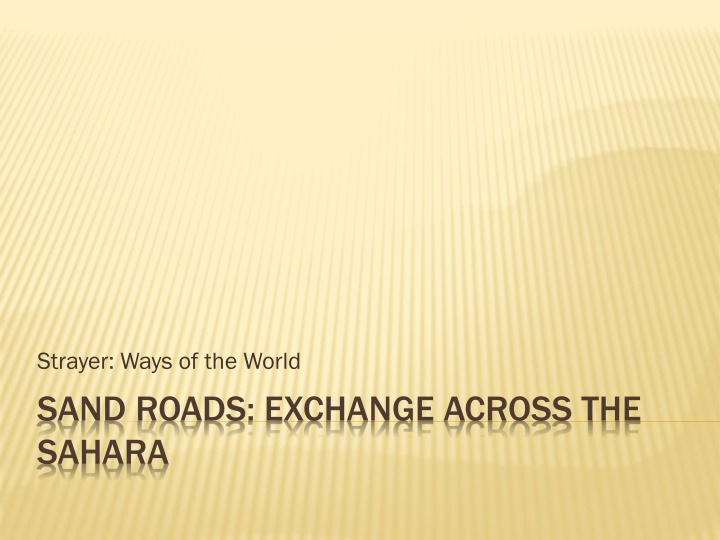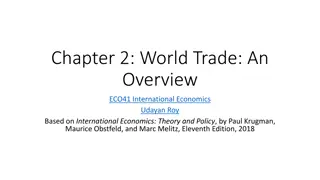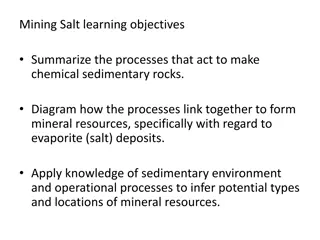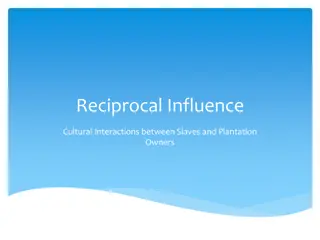Trade and Empire in West Africa: Gold, Salt, and Slaves
Trans-African trade across the Sahara region was facilitated by environmental variations, leading to the development of urban clusters and the emergence of major trade routes for gold, salt, and slaves. The introduction of camels revolutionized trans-Saharan commerce, allowing for the growth of international trade routes and the development of powerful states in Western and Central Sudan.
Download Presentation

Please find below an Image/Link to download the presentation.
The content on the website is provided AS IS for your information and personal use only. It may not be sold, licensed, or shared on other websites without obtaining consent from the author.If you encounter any issues during the download, it is possible that the publisher has removed the file from their server.
You are allowed to download the files provided on this website for personal or commercial use, subject to the condition that they are used lawfully. All files are the property of their respective owners.
The content on the website is provided AS IS for your information and personal use only. It may not be sold, licensed, or shared on other websites without obtaining consent from the author.
E N D
Presentation Transcript
Strayer: Ways of the World SAND ROADS: EXCHANGE ACROSS THE SAHARA
COMMERCIAL BEGINNINGS IN WEST AFRICA 1. trans-African trade was also based on environmental variation North Africa manufactured goods Sahara had copper and salt deposits, dates agricultural peoples further south grew crops, mined gold 2. earliest trade in the region was among agricultural peoples in the Sudan emergence of urban clusters in the early centuries C.E. most famous was Jenne-jeno ( Niger Valley civilization) a. b. c. a. b.
GOLD, SALT, AND SLAVES: TRADE AND EMPIRE IN WEST AFRICA 1. introduction of the camel in early centuries C.E. was a turning point camels can go 10 days without water b. made it possible to cross the Sahara 2. regular trans-Saharan commerce by 300 400 C.E. 3. merchants especially wanted gold from West Africa (along with ivory, kola nuts, slaves) a.
GOLD, SALT, AND SLAVES: TRADE AND EMPIRE IN WEST AFRICA 4. the Sahara became a major international trade route huge caravans (as many as 5,000 camels) b. caravans traveled the desert for over 1,000 years a.
GOLD, SALT, AND SLAVES: TRADE AND EMPIRE IN WEST AFRICA 5. trade encouraged new and larger political structures creation of a series of states in western and central Sudan between 500 and 1600 C.E., including Ghana, Mali, Songhay, Kanem, and Hausa city-states b. all were monarchies with elaborate court life and at least some administration and military forces all had a reputation for great riches a. c.
GOLD, SALT, AND SLAVES: TRADE AND EMPIRE IN WEST AFRICA 6. slavery was present in West Africa at first, most slaves were women b. with development of civilization, male slaves were used as officials, porters, craftsmen, miners, agricultural laborers most slaves came from societies raided farther south d. some 5,500 slaves a year came from across the Sahara between 1100 and 1400 a. c.
GOLD, SALT, AND SLAVES: TRADE AND EMPIRE IN WEST AFRICA 7. substantial urban/commercial centers (such as Koumbi-Saleh, Jenne, Timbuktu ) some became manufacturing centers b. Islam was established in towns a.























